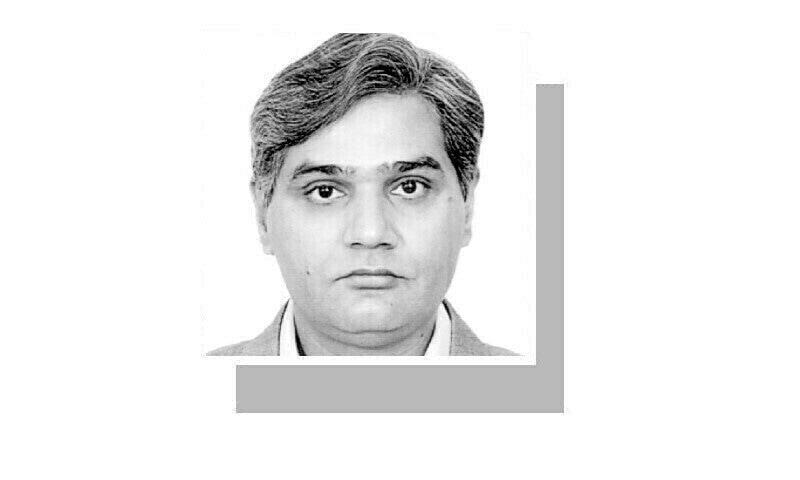THE use of drones in warfare is no longer novel. From the battlefields of Ukraine to the brief India-Pakistan stand-off in May, unmanned aerial systems have steadily shaped the way conflicts are fought. Once confined to the arsenals of state militaries, drones have now become part of non-state actors’ toolkits too. This transformation has been gradual but deliberate, as militant groups learn to adapt commercially available platforms or assemble improvised systems for their tactical needs.
This global evolution has found its echo in Pakistan’s tribal districts, where Islamist militants have begun moving from occasional experimentation to more consistent and coordinated drone operations. The shift is not merely technical. It carries a political undertone, signalling to local populations and state actors alike that militants are capable of matching the technological edge of formal security institutions.
Pakistan’s security forces were already using drones for surveillance, reconnaissance, and precision targeting. But the appearance of similar technology in militant hands has complicated the battlefield equation. The skies over conflict zones now hold an ambiguity: a drone sighted overhead may belong to either side, and this blurring of lines heightens operational and psychological uncertainty.
For residents, the growing drone presence is unsettling. Many remain unsure whether the military or militants fly the machines they hear. This uncertainty steadily corrodes trust in the state’s ability to protect them. The fear is not abstract. Farmers delay work in their fields, shopkeepers close their shutters earlier than usual and inter-village travel is restricted. The constant buzzing overhead imposes a psychological toll, making life feel precarious even when no attack occurs. Over time, such conditions widen the social distance between communities and the state.
The appearance of drone technology in militant hands has complicated the battlefield equation.
The past few months have seen an intensification of militant violence in KP. According to local monitoring groups, July alone recorded 28 militant attacks in the province, several of them high-profile. Bannu’s Miryan Police Station came under repeated aerial assaults. The deadliest incident was in Orakzai, where eight paramilitary personnel lost their lives. This was particularly significant because Orakzai had long been considered one of the more secure districts compared to the southern belt, a perception now eroding as the militant influence spreads northwards.
The southern districts remain tense, with curfews imposed in multiple locations. On July 24, Tank district’s Jandola subdivision was placed under a daylong lockdown, while similar restrictions were applied in Birmal tehsil of lower South Waziristan due to credible threats. In Bajaur, a three-day curfew preceded a significant security operation aimed at clearing militant strongholds. Such measures underline not only the fragile security environment but also the strain on state capacity in containing the threat.
For now, militant drone warfare in Pakistan remains in its formative phase. Accuracy is inconsistent, and much of the activity still bears the hallmarks of experimentation. Yet security officials believe the trajectory is clear: as militants gain confidence and refine their techniques, both the frequency and lethality of these strikes will likely increase, a pattern already seen in other conflict theatres.
For these groups, drones offer versatility. They can deliver improvised explosive devices or small munitions with relative precision, using low-cost quadcopters that are easy to source or assemble. They can map checkpoints, log patrol timings, identify weak points in security perimeters, and spot targets for indirect fire or suicide attacks, relaying live video to command teams in real time. Drones are also used for logistical purposes, moving Sim cards, batteries, medical supplies or technical components between cells in areas where ground movement is too risky. Beyond their functional role, drones serve as tools of psychological warfare, producing aerial footage for propaganda, amplifying the perception of militant reach and eroding the sense of state control.
The state’s response is beginning to adapt to this emerging threat. Towards the end of July, police in KP deployed anti-drone technology for the first time during an operation in Bannu. An anti-drone gun sent from Peshawar successfully disrupted hostile UAV activity, forcing militants to abort movements. Authorities now intend to expand the deployment of such systems across the southern districts, integrating them into counter-militancy operations. Police officials express optimism that this capability will allow faster, more precise responses and help blunt the evolving tactics of militant groups.
Responsibility for these attacks is not always straightforward to establish. In Bannu, most incidents have been attributed to the Hafiz Gul Bahadur group. Yet in several cases, the perpetrators remain unidentified. Security forces have generally blamed the TTP, but the group, in some of its official statements, has denied operational involvement, claiming it is still in the process of acquiring drone technology.
Abdul Sayed, a Sweden-based researcher, offers a more nuanced account. He notes that since 2024, footage of drone strikes has been quietly circulated through TTP’s unofficial media channels, while official communications have avoided direct acknowledgement. This changed in 2025, when the TTP faction Ittehad began openly claiming drone attacks. The move drew criticism from pro-TTP voices on Telegram, who argued that public acknowledgement was strategically unsound. Nevertheless, Ittehad persisted, and eventually, the TTP leadership followed suit, marking a shift in propaganda posture.
From discreet experimentation to open claims, the evolution of militant drone use indicates that these systems are becoming increasingly entrenched in Pakistan’s internal security landscape. The country’s security challenges were already complex and multifaceted, and the introduction of drone technology adds a new layer of complication. While Islamist militants in KP’s tribal districts are the most frequent users, there is also evidence suggesting that Baloch insurgents have adopted this technology, as indicated by several video clips and reported terrorist attacks.
If left unchecked, the spread of drone use could deepen mistrust between the state and local populations, further destabilising fragile districts.
The writer is a security analyst.
Published in Dawn, August 10th, 2025
